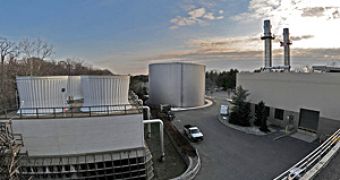Princeton University published today its third annual report, which highlights the institutions' major green goals and strategies. The officials focused their attention towards providing effective answers to problems which have become visible on an international scale, like the growth of CO2 emissions and resource conservation.
The institution has decided to respond to these challenges while displaying environmental awareness and civic commitment.
The report reflects that Princeton has managed to keep its carbon footprint under control following the same trend noticeable in 2008. Further more, it managed to preserve its water resources on campus and lower the amount of landfill waste by 13%, compared to the numbers provided for 2006.
“One feature that sets apart the Sustainability Plan that Princeton adopted in 2008 is our decision to mitigate our environmental impact solely with campus-based investments in efficiency and culture change."
" We have a tremendous opportunity to use the physical campus as a testing ground for the benefit of students and researchers as we seek to reach the Sustainability Plan goals," affirmed Executive Vice President Mark Burstein.
While taking about the impact the institution has upon the air quality, officials say that the amount of greenhouse gas emissions dropped by 2.6 percent since 2008, the first year in which Princeton's energy-efficient co-generation plant opened in 1996, actually proved its utility.
In 2010 and 2011 the representatives announced a small growth of GHG emissions, due to the activity of the newly opened chemistry lab. The Frick Chemistry Lab triggered a 1.5 percent increase in pollutants, lowering the air quality with 111,700 metric tons.
This fall, Princeton started taking into consideration the benefits a 5.2-megawatt solar collector field on 27 acres might offer. This fall, it has started implementing the project, which relies on 16,500 PV able to provide 8 million kWh per year, enough to power up to 700 average households.
This initiative would stop 3000 metric tones from reaching the atmosphere, managing to decrease the facility's carbon footprint.
The entire project is part of a more ambitious plan, which reveals Princeton's eco-conscious conduct and also its need to redefine itself as a sustainable institution.
"Our experience this past year demonstrates what a considerable challenge it is to meet our goal of decreasing carbon dioxide emissions to 1990 levels — 95,000 metric tons — by 2020 through direct local reductions with no purchase of market 'offsets' and within the constraints of our growing space needs."
"We anticipate that campus expansion will require even greater improvements in energy efficiency to achieve the net reductions stated in our plan,” concluded Burstein.

 14 DAY TRIAL //
14 DAY TRIAL //